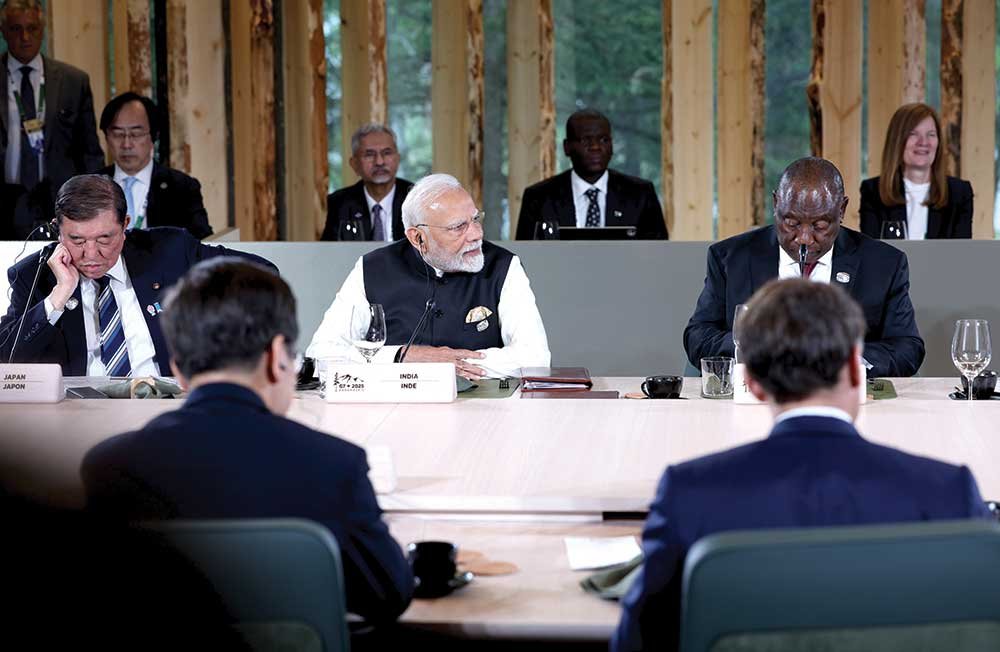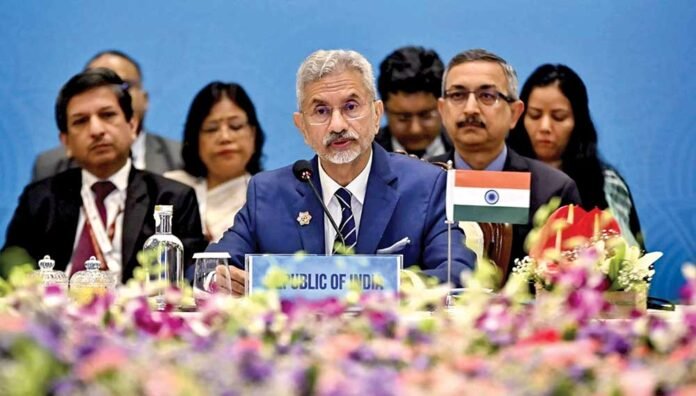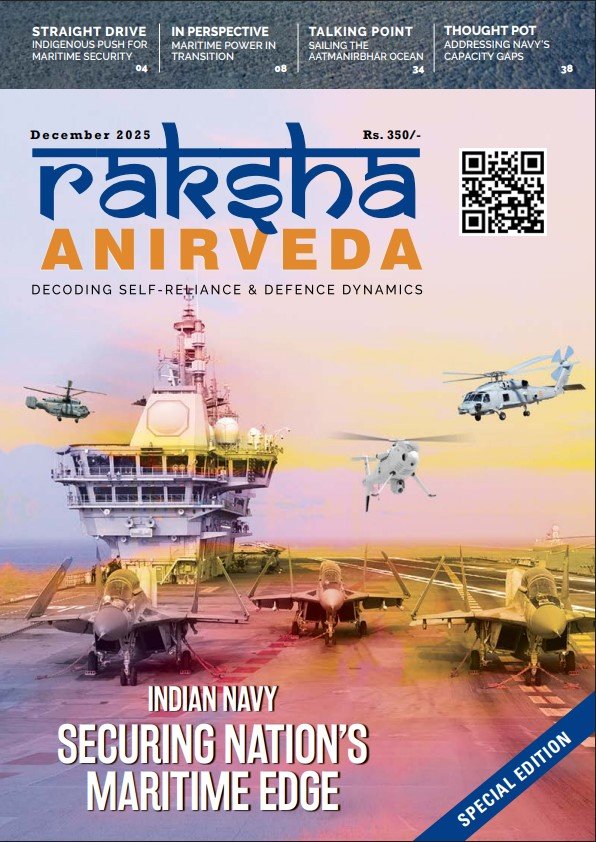Aprofound vacuum in international leadership has emerged as the world grapples with pervasive conflicts, climate stress, and the breakdown of trust in global institutions. As the old Western-led order loses moral authority and the China-centric model lacks transparency and rule-based governance, many countries, particularly the Global South, seek a more inclusive, development-focused approach to cooperation. India, in that context, with its democratic ethos, civilisational depth, and pragmatic diplomacy, is perceived as a promising choice. It is not merely rising as a power but is also evolving into a stabilising force, a bridge-builder, and a credible voice for shared futures.
India’s growing stature on the world stage is backed by tangible economic strength. As of May 2025, India’s nominal GDP crossed $4.3 trillion, making it the fourth-largest economy globally, surpassing Japan. The International Monetary Fund projects a real growth rate of 6.5 per cent in 2025, maintaining India’s position as the fastest-growing major economy. Foreign direct investment remains robust, exceeding $70 billion in 2023-24, while foreign exchange reserves now stand at over $570 billion. This macroeconomic stability reflects a carefully managed mix of domestic demand, fiscal discipline, and innovation-driven growth across sectors.
Part of this economic success is anchored in India’s digital revolution. The Digital Public Infrastructure (DPI) export to countries such as Mauritius, Sri Lanka, the Philippines, and Kenya reflects how technology developed at scale in India can serve as a public good globally. Platforms like Aadhaar and UPI enable efficient welfare delivery, financial inclusion, and governance transparency at a low cost. Hence, these efforts are not just technological exports, but instruments of soft power and capacity-building diplomacy. They signal India’s willingness to share what works.
This is also where India’s Aatmanirbhar Bharat (self-reliant India) initiative has shown early results. Introduced in 2020 to enhance economic self-reliance, the initiative has already mobilised more than $23 billion in production-linked incentives across various sectors such as semiconductors, pharmaceuticals, renewable energy, and electronics. Today, over 70 per cent of smartphones sold in India are manufactured domestically. More importantly, it has increased the country’s resilience to global supply shocks, while boosting its profile as a reliable manufacturing and innovation hub for the world.
Beyond technology, India’s diaspora of over 32 million acts as India’s ‘national influencers’ or Vishwabandhu (global friends), extending India’s reach, as reiterated by External Affairs Minister Dr S Jaishankar during an interview with Dr Sreeram Chaulia’s show ‘Indian Diplomacy’ hosted at national broadcaster, Doordarshan. In parliaments from Washington to Canberra to London, India caucuses champion closer ties, trade, and policy collaboration, while in local communities they strengthen cultural bonds and enable swift humanitarian responses. In addition, remittances from the diaspora, totalling over $100 billion a year, fuel development domestically.
With its democratic ethos, civilisational depth, and pragmatic diplomacy, India is evolving into a stabilising force and a bridge builder. India’s growing stature on the world stage is backed by tangible economic strength. India’s nominal GDP hit the $4.3 trillion mark, making it the fourth-largest economy, surpassing Japan. IMF projects a real growth rate of 6.5% in India in 2025
Furthermore, India’s development diplomacy, especially in the Global South, adds depth to this economic outreach. The Ministry of External Affairs’ Development Partnership Administration (DPA), launched in 2012, coordinates over $30 billion in grants and lines of credit across more than 65 countries. These include solar micro-grids in Bhutan, convention centres in Niger, hospitals in Rwanda, and water purification projects in Latin America amongst other initiatives. New Delhi’s initiatives are unique and widely welcoming because of its non-prescriptive and consultative approach. Unlike traditional donors or strategic lenders, India’s development model is cooperative rather than transactional, and inclusive rather than extractive.
As the world reels from a string of ‘grey rhino’ crises ranging from climate extremes to food insecurity and infrastructure collapse in war-affected regions, India’s emphasis on sustainable development becomes even more relevant. When the Russia-Ukraine conflict triggered food shortages, India safeguarded its domestic food security first but swiftly resumed wheat and rice supplies to the World Food Programme and partner nations. It remains one of the largest suppliers of rice and pulses to Africa and South Asia. During the COVID-19 pandemic, under Vaccine Maitri, India supplied over 200 million doses of vaccines and essential medicines to more than 100 countries, becoming a first responder when global supply chains were paralysed.
Additionally, policy analyses up until 2018-19 pointed to gaps in India’s evacuation policy, particularly visible during Middle East crises. Those insights often flagged by this author in her writings at academic and government forums have since shaped a comprehensive overhaul. Today, the government has instituted a dedicated evacuation fund, a streamlined grievance-redress mechanism, rapid-response teams, and multiple evacuation channels, ensuring that Indian citizens abroad can count on swift, reliable assistance in emergencies.
India’s leadership in climate diplomacy also reflects a long-term vision. It chairs the International Solar Alliance, now joined by over 100 countries. At COP28, India played a key role in securing a $100 billion ‘loss and damage’ commitment to help vulnerable nations adapt to climate shocks. It also promotes green hydrogen corridors and offshore wind alliances with countries in Europe and Asia. These actions are not driven by tokenism; they are rooted in India’s conviction that climate justice must guide climate action.
India’s regional outreach is anchored in its Indian Ocean policy through initiatives like SAGAR (Security and Growth for All in the Region) and the MAHASAGAR platform. These are shaping maritime cooperation on everything from anti-piracy to disaster relief. The Indian Ocean Rim Association (IORA) and Indian-led efforts in coordinating humanitarian assistance and disaster response have made India a dependable anchor for regional stability. The India-Middle East-Europe Economic Corridor (IMEC), announced in September 2023, illustrates India’s connectivity diplomacy. It links ports in the Gulf to Europe via Israel and Jordan, offering a transparent and trade-friendly alternative to opaque debt-driven infrastructure models.

Yet, India’s strategic positioning is often misunderstood as fence-sitting. This perception misses the nuance of what External Affairs Minister S Jaishankar calls the ‘third option’, a posture that upholds strategic autonomy rather than aligning with power blocs and forming exclusive partnerships. India does not follow binaries. It builds bridges. By refusing to be drawn into Cold War-style camps, India presents itself as a partner that others can trust, especially smaller and medium-sized nations caught in the crosswinds of great-power rivalry. This posture is particularly valuable in a world where multilateral institutions often fail to represent the voice of the majority.
India’s presidency of the G20 in 2023 proved this. It delivered long-awaited African Union membership in the group and shifted the conversation towards food security, inclusive finance, pandemic preparedness, and digital inclusion. India also launched the Global Biofuel Alliance and continues to steer the International Solar Alliance. In every such forum, the message has been consistent: India stands not just for itself, but for equitable growth across the Global South.
India’s leadership in climate diplomacy reflects a long-term vision. It chairs the International Solar Alliance, now joined by over 100 countries. At COP28, India played a key role in securing a $100 billion ‘loss and damage’ commitment to help vulnerable nations adapt to climate shocks. It also promotes green hydrogen corridors and offshore wind alliances with Europe and Asia
Domestically, the Viksit Bharat 2047 roadmap lays out a bold development blueprint to make India a fully developed nation by its centenary of Independence. It prioritises universal health care, education, green energy leadership, and a trillion-dollar digital economy. Complementing this is the Panch Pran of Amrit Kaal, that is, the five fundamentals that guide India’s ascent, namely, the unwavering goal of national development, the elimination of any colonial mindset, honour and pride in our roots, the cultivation of unity, and a reinforced sense of duty among every citizen. Together with Aatmanirbhar Bharat, this roadmap underpins India’s aspiration to project itself not as a hegemon, but as a responsible development partner, globally active, but never interventionist.
India’s influence extends far beyond economics. Its foreign policy today embodies a transition from the earlier idea of Vishwaguru – not positioned along a power-driven Western leadership discourse but more towards a guiding teacher of values – to Vishwamitra and Vishwabandhu – a global friend and equal partner. This conceptual shift reflects a grounded understanding of 21st century geopolitics. India does not claim moral high ground or civilisational superiority, but rather prefers collaboration over coercion. Its goal is not to dictate terms, but to jointly frame agendas. That is a far more acceptable form of leadership for countries across Africa, Southeast Asia, Latin America, and even parts of Europe.
This cooperative leadership is also visible in India’s tech diplomacy. Its DPI solutions are being piloted in Kiribati and Fiji, and are being considered by Brazil and Indonesia. Over 10 billion dollars in semiconductor investment commitments have come from the US, Taiwanese, and South Korean firms, reflecting India’s role in global tech supply chain diversification. Meanwhile, India remains vocal at the UN and G20 on ethical AI, data sovereignty, and digital rights — issues that resonate deeply with developing nations.
The West-led order appears increasingly self-centric, while the East-led model under China often lacks transparency or inclusiveness. India provides a third perspective, one that is rules-based, democratic, and development-oriented. It does not seek to dominate, but to convene. Whether through green partnerships, food security initiatives, or post-conflict reconstruction support, India’s voice carries the quiet credibility of action over rhetoric.
Challenges remain, undoubtedly. India must address gaps in infrastructure, sharpen institutional delivery, and expand its presence in under-represented regions such as Latin America and Francophone Africa. However, it enters this phase with a unique advantage, such as credibility, trust, and a cooperative spirit. A multipolar world looks for ideas that unite rather than divide. In a world accustomed to zero-sum calculations, India’s multipolar, collective-order approach stands out as an alternative. It understands that the real tests of this century – over resources, climate resilience, food security and digital governance – demand alliances built on mutual interest and shared responsibility. India may still be emerging as a global leader, but its emphasis on sustainable development, respect for sovereignty, and democratic values offers a vision of international cooperation well suited to the challenges ahead.
The writer focuses on contemporary Middle Eastern affairs and is the author of 'India and the Gulf: A Security Perspective'. She is also a subject matter expert at the Centre for Joint Warfare Studies.






